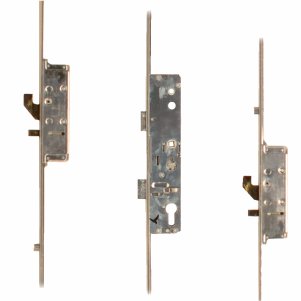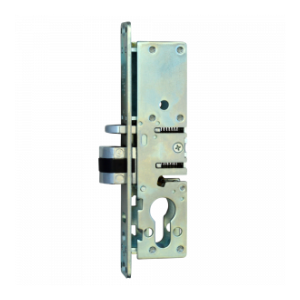How Do I Install A Lock?

There are a number of reasons why you would want to install a new lock in a door in your home or business. This could be because the existing lock is damaged. It could be because you have decided the existing lock is not sufficient for the level of security required and you need to install a bigger one or a different design. Or it could be because you are moving into a new home and for peace of mind you want to install your own door locks for additional security. Whatever the reason, fitting a door lock is essential for security reasons, and this guide is designed to help you with this process.
What kind of door lock do I need?
The design of your door lock mechanism can change according to the style of door or handle that you want, but also the security level. Some door locks are more suitable for internal or external doors, for example. Whatever design ideas you have, there are typically three types of common door locks in use in the UK:

Euro Profile Cylinder Lock – this is common for external doors and offers a little more security than a mortice sash lock. It is also easier to install as you don’t need to remove the entire mechanism to replace it,- just the internal cylinder.
- Mortice Sash Lock – also known as a bolt-through latch, this is best for internal doors and requires the creation of a hole (also known as a ‘mortice’) in the door edge in which to slot the locking mechanism.
- Rim Cylinder Lock – this type of lock is ideal for thinner doors that do not provide enough space to fit a mortice sash lock. The rim cylinder lock is attached to the door surface and is common on external doors.
How to install a Euro Profile Cylinder Lock
All Euro profile cylinder locks have the same profile, but you need to choose the same size lock as the one you are replacing. You should also ensure your new lock is a good quality lock.
- Remove the central lock fixing screw and keep it safe
- Slightly loosen the handle to enable the cylinder to be removed
- Place the key in the lock and turn it slowly from side to side, this should allow the cam to align and enable you to slide the lock out
- Insert the new cylinder and replace the fixing screw you retained from earlier
- Test the lock with the key
How to install a Mortice Sash Lock
Make sure you choose a good quality lock that has a BS standard or a kite mark, and check that it meets your insurance requirements. Check also that your new lock is compatible with the old one. To do this you will need to check the distance from the edge of the door to the centre of the keyhole. If the distance is 45mm you need a 64mm lock, and if it is 57mm you need a 76mm lock. The lock must also have the same distance between the centre of the keyhole and the spindle as the existing lock, in order to make installation much simpler.
- Remove the faceplate, handle and spindle, being careful to keep the handle and spindle for later
- Remove the old lock
- Adjust the size of the mortice hole in the edge of the door until it securely and safely fits the new lock
- Fit the faceplate and replace the handle and spindle
- Test the lock with the key
- Position the new strike plate and then fit it
How to install a Rim Cylinder Lock
Again, check you have a BS standard or kite-marked lock.
- Unscrew the existing lock body and rim cylinder, making sure you retain the lock body for later
- Remove the old lock, being careful to keep the mounting plate in place
- Adjust the new lock if necessary. If the new one has a longer tail bar, this will need to be sawed off with a hacksaw
- Insert the new lock and fix it in place with screws
- Refit the lock body
- Test the lock with the key
Maintenance suggestions for your new lock
Once you have installed your lock you will start using it straight away. If you have chosen a good quality lock it should withstand constant use over a long period of time, but locks do gather dust and dirt and therefore do need cleaning and lubricating from time to time. You should also check that your fixings are tight as they can become loose over time. This can compromise your security levels and can also lead to the door becoming damaged. Poor installation is often the cause of a lock fixing becoming loose so it is important that you only install a lock if you feel competent in doing so.
* Please note this is a basic guide for informational purposes only, always consult a professional on such an installation.